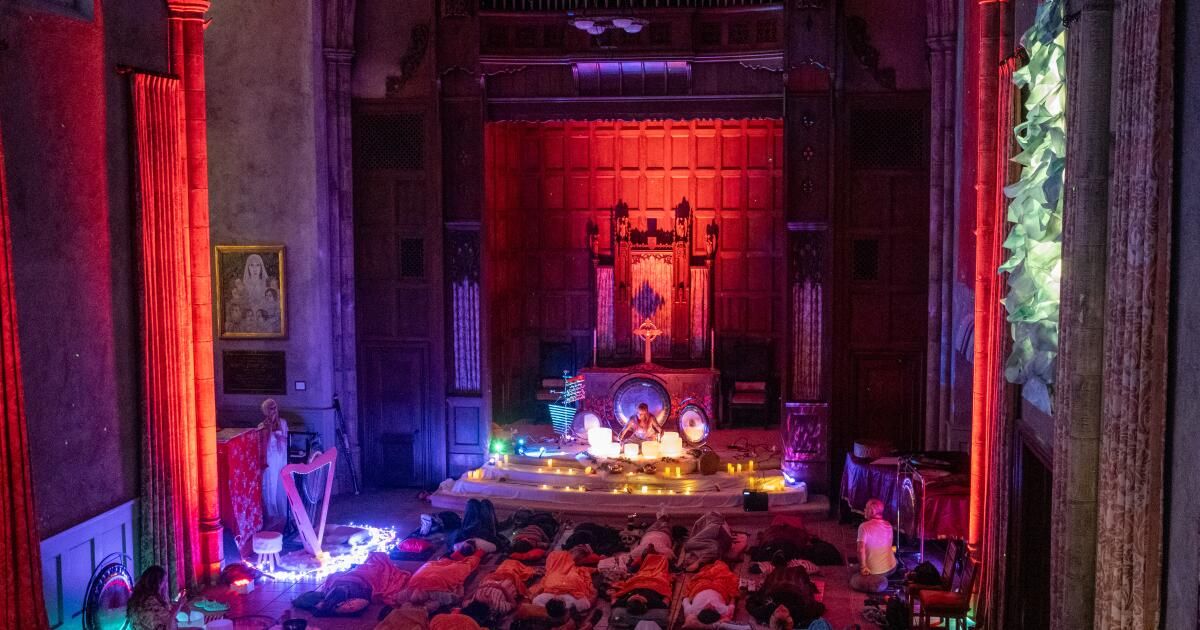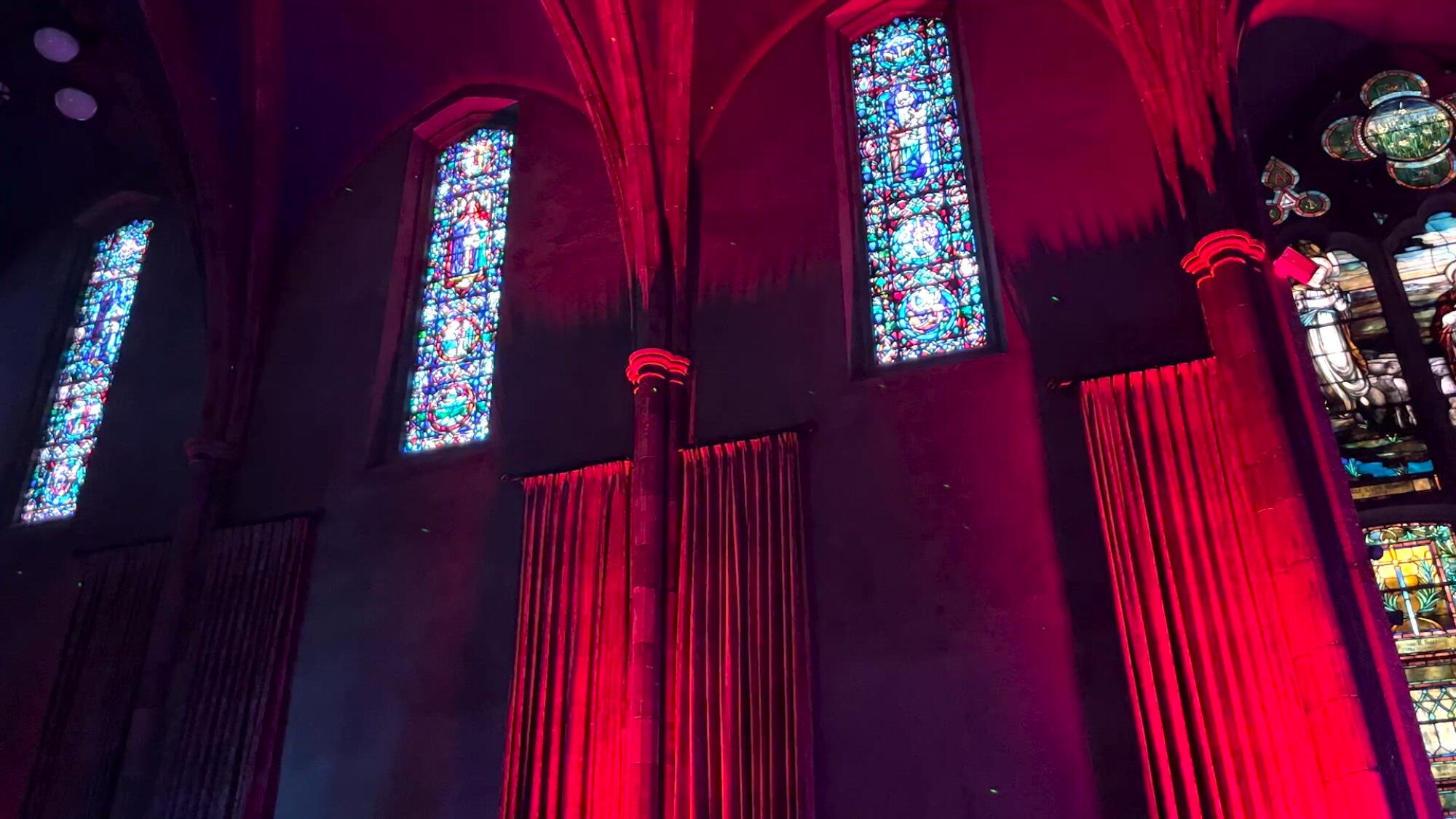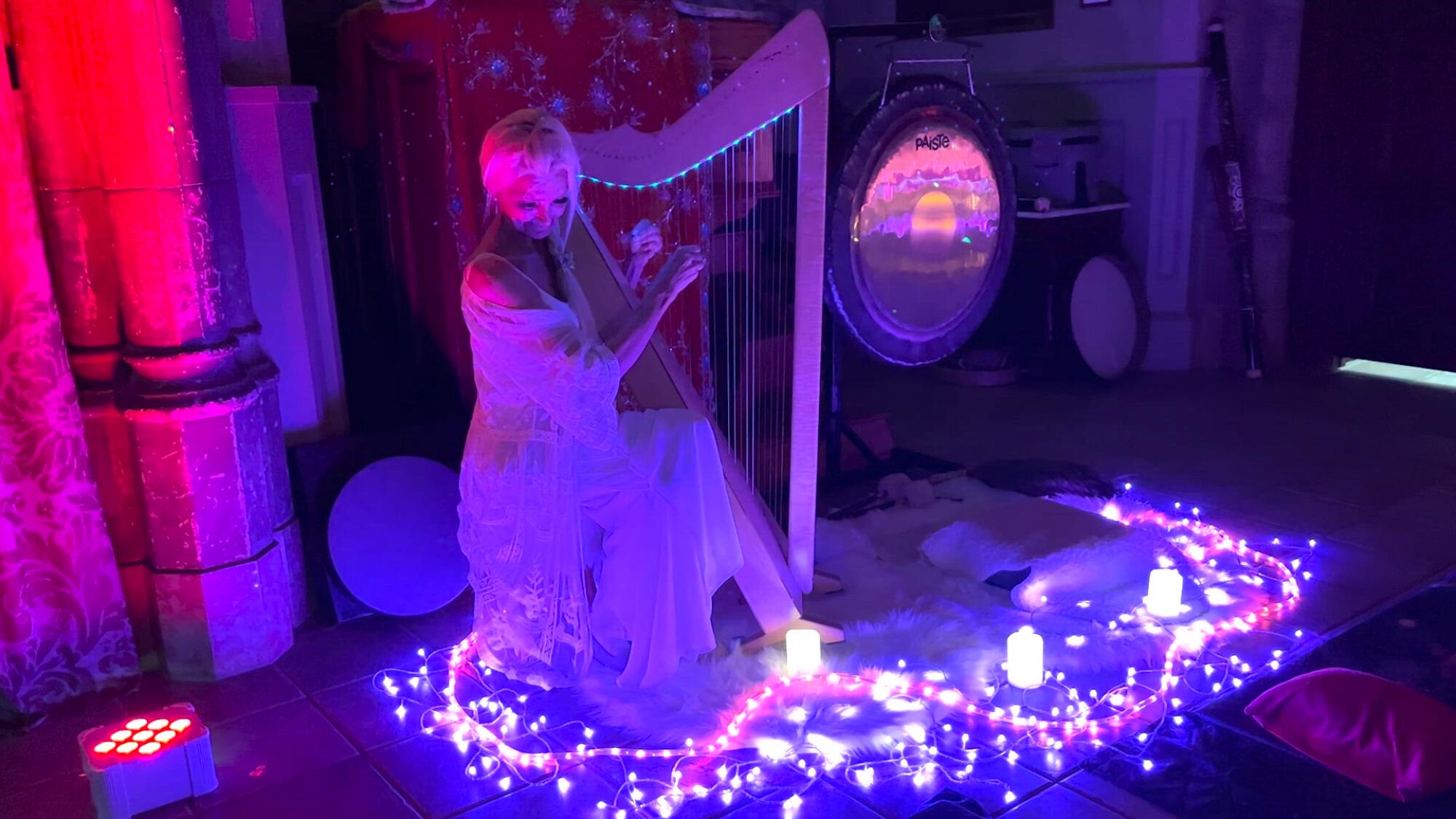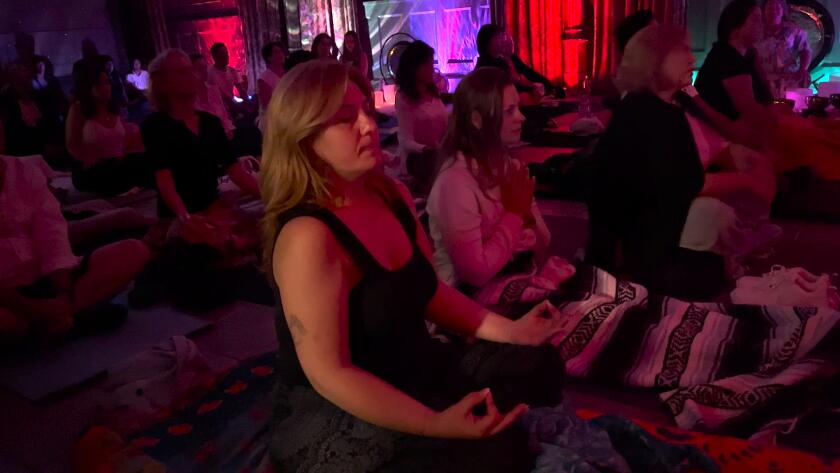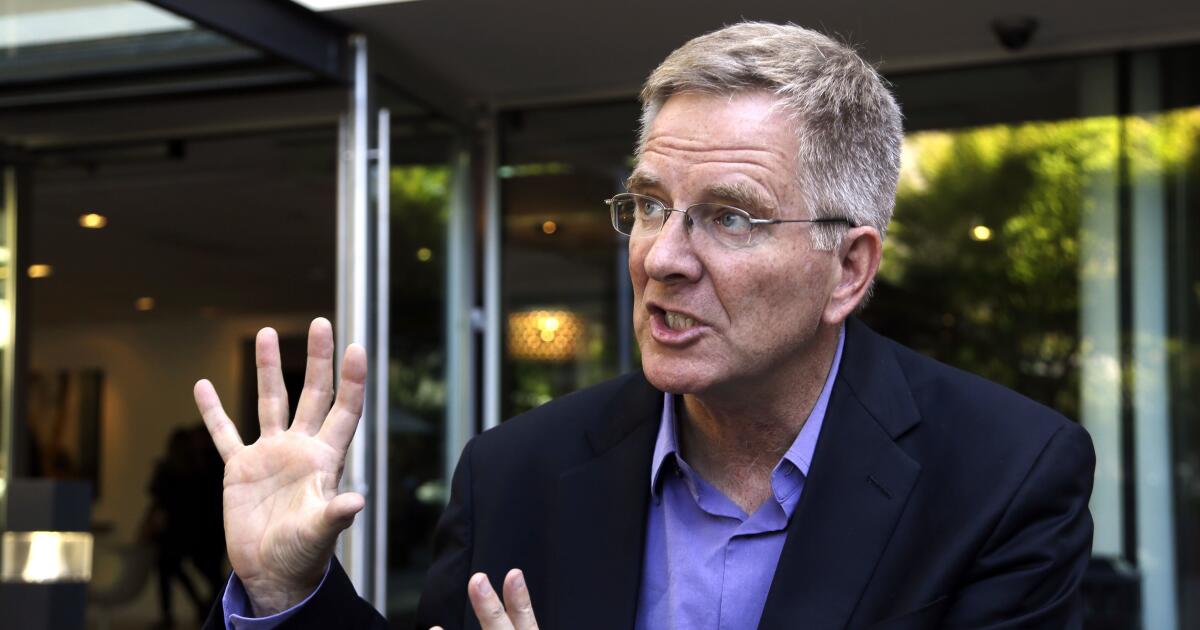Adrienne Bawa pulled into the parking lot of the First Congregational Church of Los Angeles, her seven-seat Volvo packed with fabrics, gongs and lights.
Two hours passed before the registered nurse and sound healer welcomed more than 50 people to a sound bath in the Koreatown church's soaring neo-Gothic Shatto chapel. There was much work to be done before they arrived.
“It already looks beautiful,” said Bawa, a petite redhead and founder of Sound Bird Healing, looking at the church's elegant stone pillars, vaulted ceiling and stained glass windows. “But wait until you see what we do with it.”
Yana Horowitz, 36, of Calabasas, plays crystal singing bowls during a sound bath. (Francine Orr / Los Angeles Times)
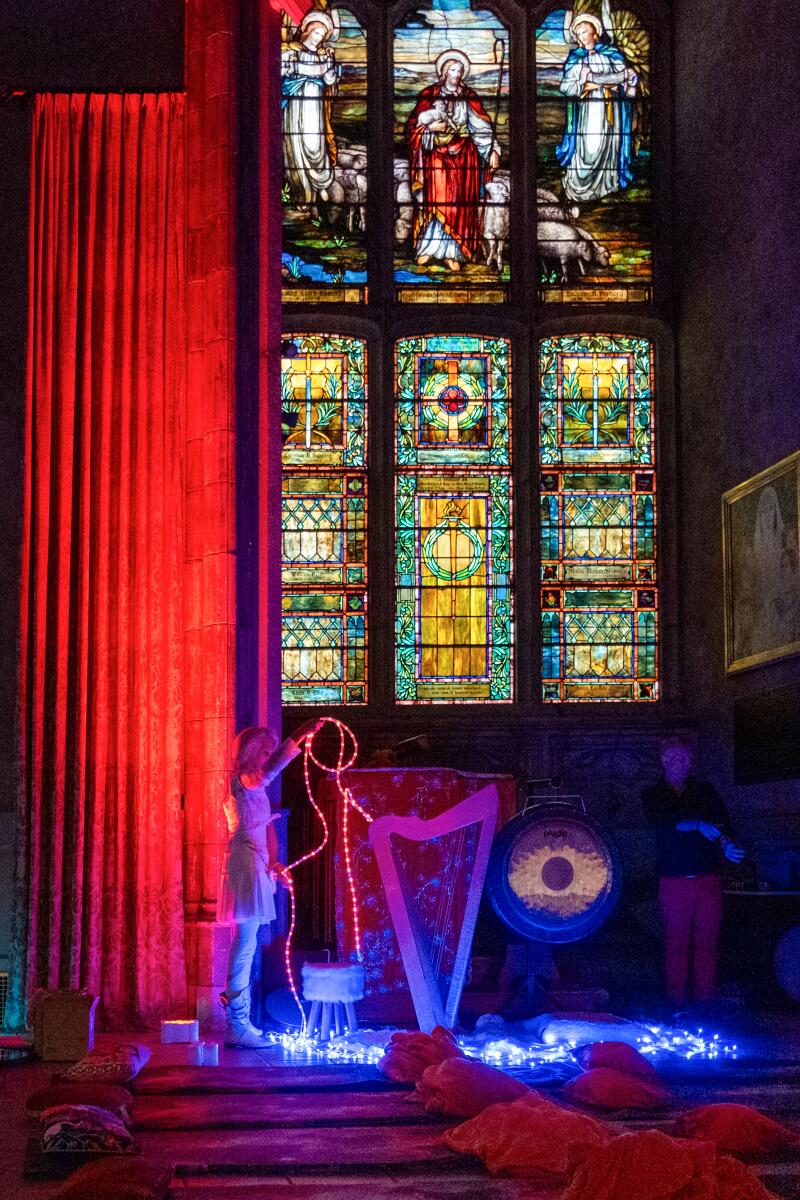
Lahila Oppenheimer finishes getting ready as guests arrive for a sound bath. (Francine Orr / Los Angeles Times)
Two hours later, the traditional chapel had been transformed into a cosmic sanctuary, alive and flickering. The altar was lit in shades of red and pink (a nod to Venus being retrograde), galaxy lights swirled on the ceiling, and quilted mats were placed on the stone floor along with pillows, eye masks, and blankets. When the first rhythmic sounds of Bawa's skin drum began to fill the room, the space looked like a cross between a yoga class and a haunted slumber party.
Spiritual? Maybe. Religious? Not so much.
It may seem incongruous to perform a sound bath, which Bawa describes as a sound experience that uses live instruments to facilitate and enhance meditative states, in the oldest Protestant church in Los Angeles. But sound bath practitioners say that church buildings, which were designed with both spirituality and acoustics in mind, are a natural home for these events.
“There are so many people who have come to that space and been in a place of healing and transformation, so the energy is there,” Bawa said. “And architecturally, churches are designed to transmit sound.”
The dome roof and pillars protruding from the walls of the Shatto chapel are not just decorative, he explained. They also serve as natural amplifiers, creating reverb by giving instrumental sounds multiple surfaces to bounce off. “Centuries ago they didn't have public address systems, so they worked with the architecture,” she said.
It also helps that churches have historically been spaces for spirituality and prayer, he said. Linda Arnoldfounder of Sonic Devas Divine Feminine Sound Meditation Experience, who will host a sound bath at First Presbyterian Church of Santa Monica on August 27. “Churches are definitely the place to invite people to be still and be in a contemplative moment. ” she said.
There is also the question of size. David Douglas He performed monthly sound baths at San Francisco's Grace Cathedral for more than 1,000 guests before the pandemic.
“It's beautiful and impressive, and the acoustics are really amazing,” he said, “but our whole goal was to find venues that were big enough to hold a lot of people.”
While many churches have resisted opening their spaces to sound bath practitioners, others have welcomed this alternative use of their sacred spaces.
“It suits us very well because we think about the mind-body-spirit connection,” said the Rev. Laura Fregin, executive director and senior minister of the First Congregational Church of Los Angeles. “Having Adrienne's sound baths here fulfills a big part of that for us.”
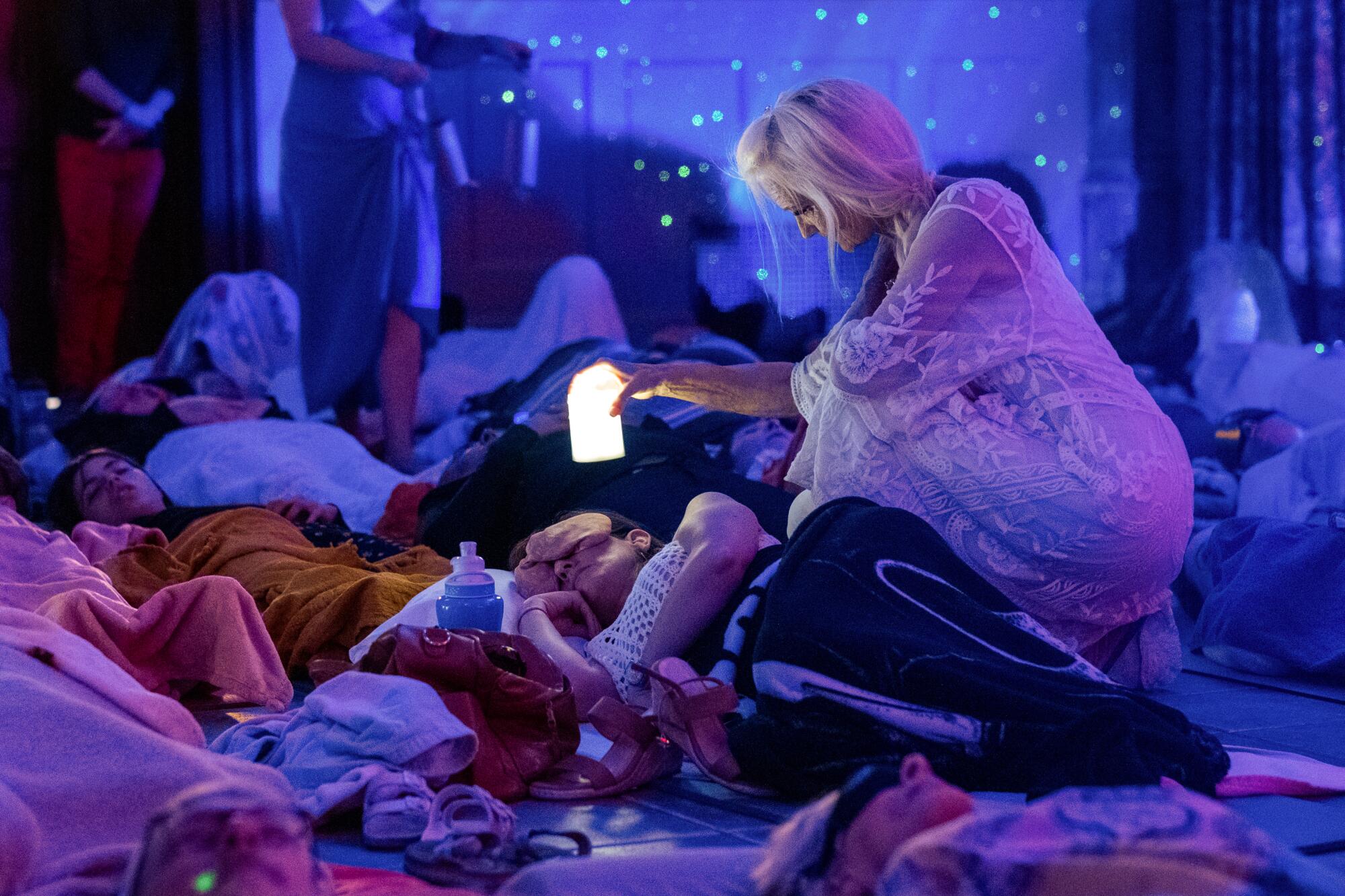
Lahila Oppenheimer, right, provides soothing light as guests lie on the floor and relax during a sound bath event inside the Shatto Chapel at First Congregational Church of Los Angeles.
(Francine Orr / Los Angeles Times)
A massage for the brain
The specific details of sound baths are infinitely varied: they can include electronic music, voice, wind instruments, gongs, drums, singing bowls, and handbells. They can be done almost anywhere: living rooms, parks, hospitals, gyms, prisons or yoga studios. There may be a single practitioner or several.
For the sound bath at the First Congregational Church, which cost between $55 and $66 depending on whether you brought your own mat and pillow, Bawa gathered six sound healers, some experienced, others apprentices. Together they guided attendees on a sonic journey that began with drums and the hum of singing bowls, then grew into the brilliant roar of gongs.
Later, musicians waved wide, flat ocean drums and rain sticks over the heads of attendees, clinked wooden beads, and played soft chimes that evoked memories of childhood, fairies, and the way light shines on the surface. of the ocean. When it was all over, Bawa led everyone in the room through three loud “Oms.”
“It's like a massage for the brain,” said Tatiana Arefyeva, a reiki master and tarot reader who attended the event.
Bawa has approached several other churches to perform sound baths in their spaces, but most have rejected her.
“There is a lot of resistance,” he said. “Some of them have questions about what a sound bath is and if it's witchy. Others worry about how their members will perceive it. Some of them said, 'We don't understand gongs or bowls.'”
The First Congregational Church of Los Angeles, where Bawa has been conducting sound baths for two years, was more welcoming. “Much of his high-level ministry came with an open heart and mind,” she said.
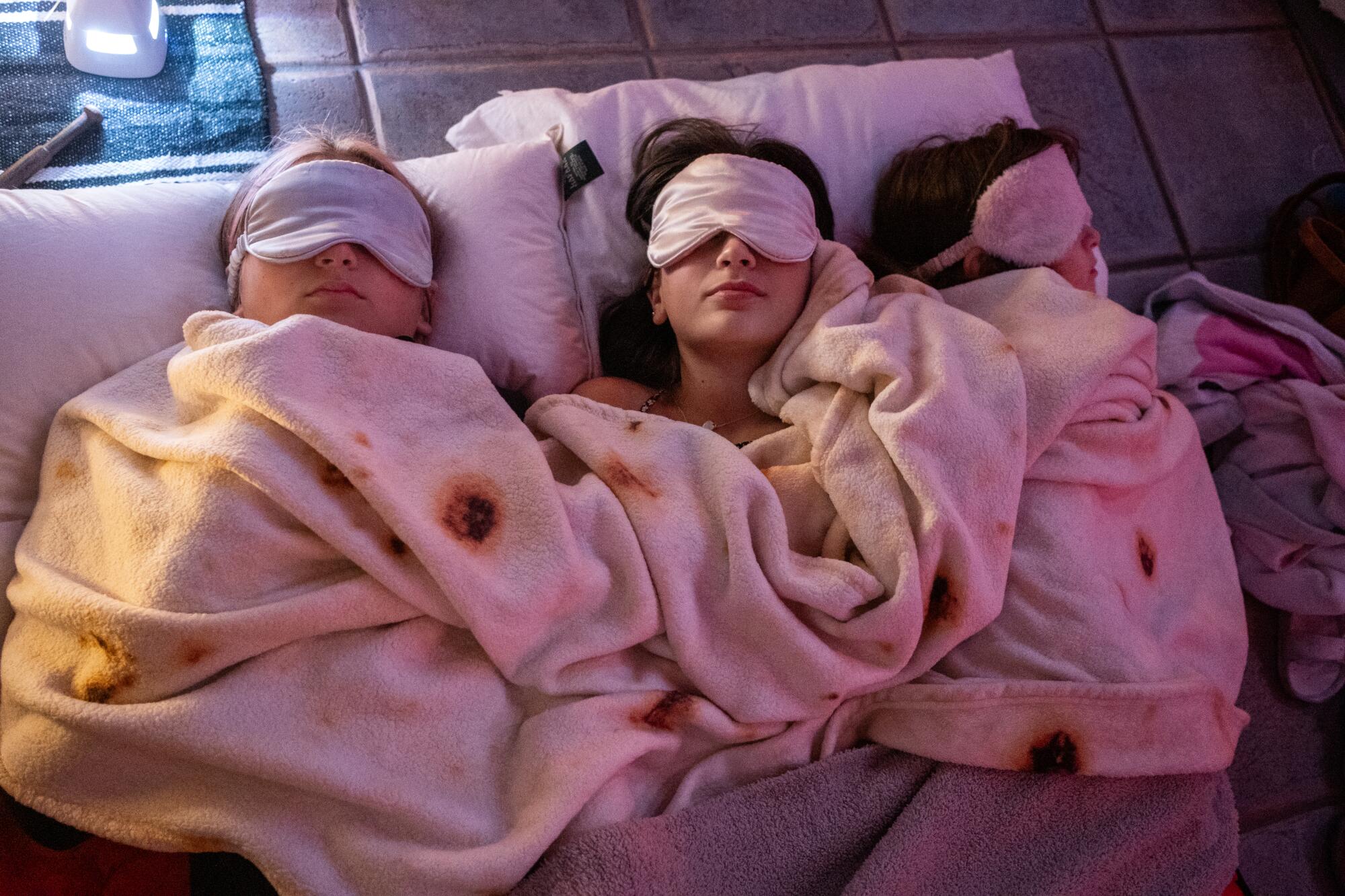
The sound bath sometimes felt like a haunted slumber party.
(Francine Orr / Los Angeles Times)
Fregin, the church's senior minister, had already attended some sound baths given by other practitioners before Bawa approached her. “I was very impressed by the feeling of living and breathing peace in all of us,” Fregin said of the experience. “The energy shared in a sound bath is truly incredible.”
In the future, she hopes the Shatto Chapel will also host yoga and tai chi classes.
“It gives people the opportunity to be in a sacred space without having to believe in something or pass a religious test,” Fregin said. “This building is a wonderful gift and it is truly our desire to share it with the city.”
Allowing Bawa to rent the space has also exposed more traditional congregants to an experience they might not have otherwise sought out, he said. Last summer, Fregin gave a ticket to the mother of one of his employees, a practicing Christian who had grown up in a very religious home. It was the first time the woman went to a sound bath. The next day she told Fregin that it had been one of the most profound experiences of her life and had helped her heal the wounds she had had since childhood.
“You don't go into a sound bath waiting for something like that to happen,” Fregin said, “but what you can do is invite people into experiences that have the potential to be transformative.”
'Modern sacred music' for the soul
Noah Klein has been bringing experimental and new age musicians to churches since 2019, when he began working with the Ambient Church concert series and, more recently, as co-founder of Floatinga Los Angeles-based collective that presents “sonic gatherings” (they don't call them sound baths) in beautiful and interesting locations in various cities around the country.
Musicians who use modular synthesizers, strings and elongated voices are a natural choice for church spaces, he said, because the music they play is not that different from what has traditionally filled those rooms. “It's like modern sacred music, but it's sacred to the spirit rather than sacred to a specific version of the faith,” Klein said.
But he also noted that community churches have a long history of hosting decidedly non-spiritual secular music, particularly all-ages punk and hardcore shows.
“You can read any all-ages music magazine and they will tell you how to contact your community center, recreation center or local church,” Klein said. “Fugazi played in churches. “This has been happening at least since the 80s.”
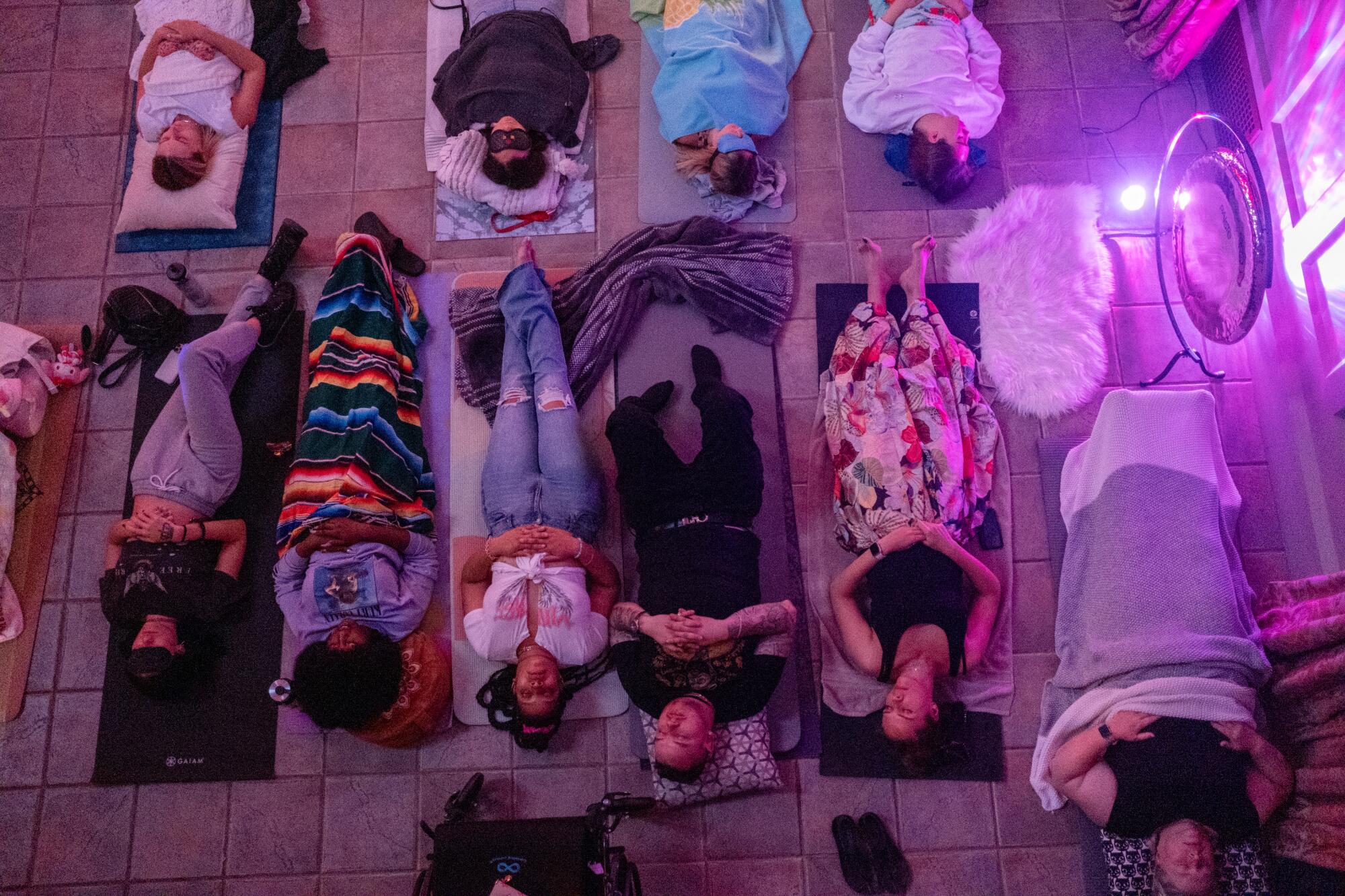
Sound bath practitioners say that church buildings, which were designed with both spirituality and acoustics in mind, are a natural home for these events.
(Francine Orr / Los Angeles Times)
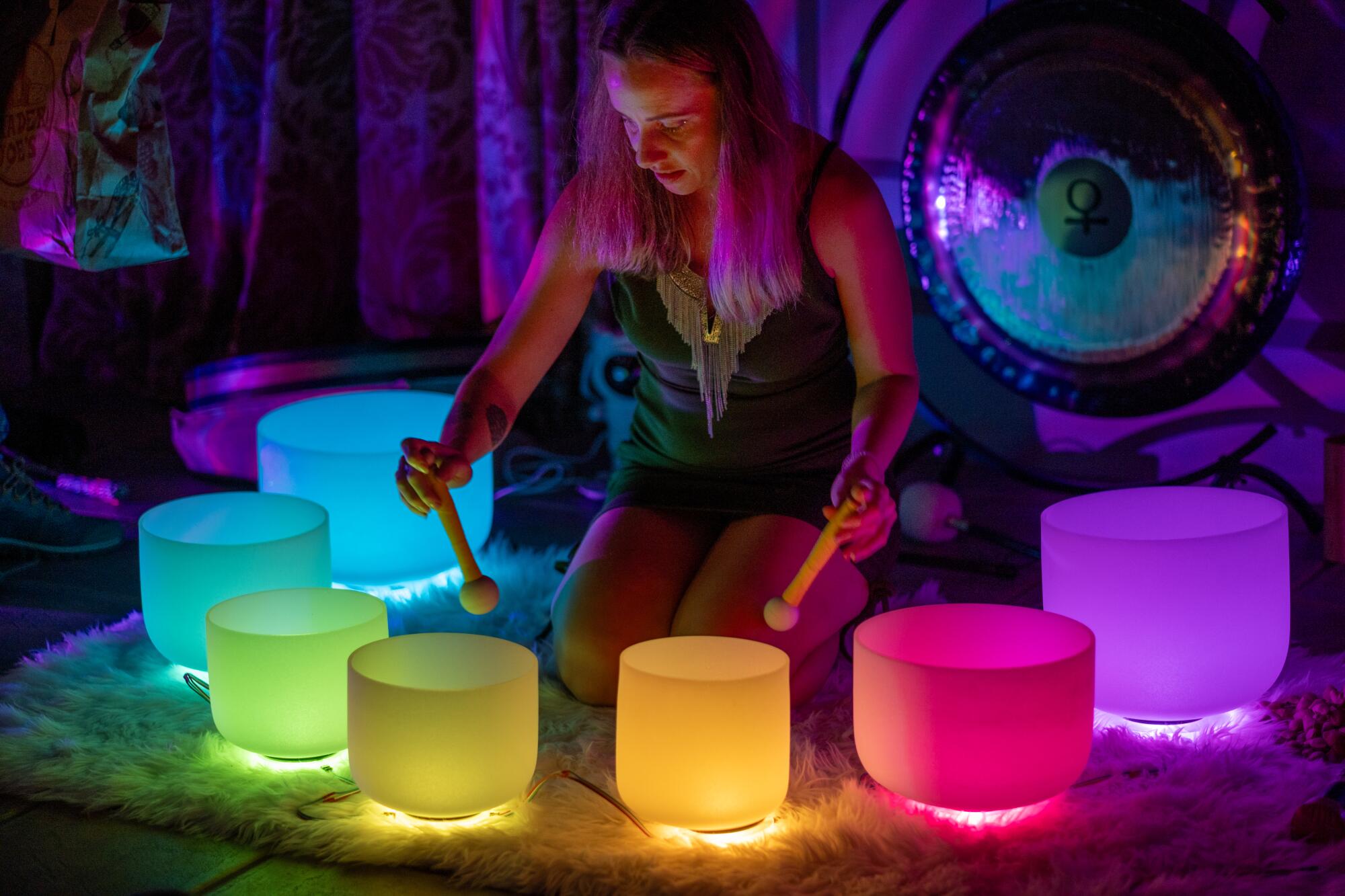
Katerina Ushakova, 34, of Encino, plays crystal singing bowls illuminated in a variety of colors.
(Francine Orr / Los Angeles Times)
Dan Dick, senior pastor of People's United Methodist Church in Wisconsin, who has written about how churches can do better use of your buildingsHe said the modern practice of churches hosting sound baths is reminiscent of when churches used to host coffee shops in the '90s.
“It's about making the church a more comfortable and real place where people come for a variety of reasons and not just for a traditional Sunday morning service,” he said. “I've seen more progressive churches offer things like sound baths as a way of saying that not everyone finds the spirit the same way.”
He added that some of the instruments associated with sound baths have a deep history in Christian tradition. “Many of the early monasteries and convents took vows of silence, but that did not include singing, bells or gongs,” he said.
Back at First Congregational Church, no one was ready to get off the mat when the sound bath ended. The people who an hour and a half earlier had been laughing with their friends and taking selfies seemed glassy-eyed and calm, as if they were coming out of a trance.
Arefyeva, the reiki teacher, said she had sought out the First Congregational Church before coming to make sure she would feel comfortable attending a sound bath in a Christian chapel. What she read gave her confidence.
“This church is not very traditional or strict,” he said. “All religions are accepted here. I know that not all churches would agree.”
Desiree Noel, 40, one of the evening's instrumentalists, also said it was important to her to be in a church that welcomes everyone.
“This increases the vibrations,” he said.

